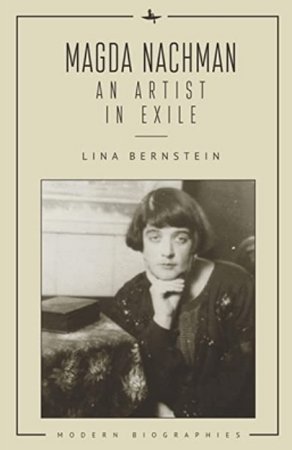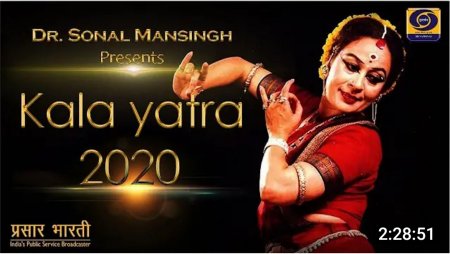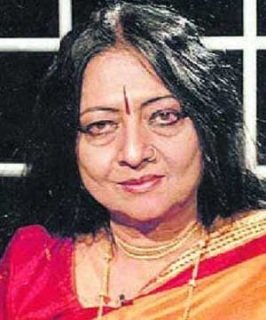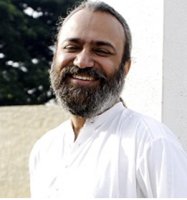
|  |

|  |
 e-mail: khokar1960@gmail.com Naach, Nachman; watch, watchman! October 21, 2020 Reading some notes on the net, one learns how there's so much information now and some mis-information too! Take the word naach, which the British couldn't pronounce properly. Them folks had problems with most basic names and words: JeyPour for Jaipur; Vadodara became Baroda; Mumbai, Bombay; Madras was MADruss. And so on. So imagine a niche word like Naach (dance) which became Nautch (even today, reputed channels like the BBC can't call Nepal as Ne-paal but NeyPaul. Notice next time you do watch news. Unless you are busy making it!). Earlier, a copy editor or sub checked facts, even English (or any language one wrote in) and only then a piece got published. Such writings stood the test of time. Nay, they became a reference point. What was written yesterday is forgotten today. Besides, today, many more are writing. If not books, then on Facebook, facts be damned. Who cares anyway? This is creative writing age at its best. Who reads or who cares? And books? Everyone who craves and wants attention is on Facebook too. A book on art - be it dance or painting - or a painter on dance like Magda did (painted Shanta Rao, Uday Shankar, our folk forms), is most welcome. Especially if it is well researched, well written and reasonably well published and affordable.  Such a treat came our way via Lina Bernstein's biography on Magda Nachman, a painter born in former Soviet Union/Russia. She also became later in life, a footnote on Indian art scene, since she painted portraits of Parsis and peasants; the rich and the rice fields of India; to survive in India and be productive. Bombay in 1940s and Madras in South were the cultural hubs of India, so history gave her a role to mentor and guide a few upcoming artists too. Her story is story of many in Europe in-between WW1 and WW2 and the consequent displacement suffered thereafter. Her life begins as a privileged youngster brought up in St. Petersburg at the close of the 19th century which led to art studies under giants like Leon Bakst and Kuzma Petrov-Vodkin (no, the word Vodka does not come from that!). Her real story begins for us when she marries an Indian activist M.P.T. Acharya and moves to Mumbai. It is this life in Mumbai (and her works lying in Baroda palace museum too), that rings close to our reality. In fact, Lina found me on the net because I was Baroda born! (And had a serious dance connection that shows up on any internet engine search). The book talks of a bygone era. Thanks again to Lina Bernstein's research, a close family painter friend of my father's - Shiavax Chavda - shows up too. Didn't know Shirin Vajifdar, the reputed dancer-critic, married to uncle Mulk Raj Anand was related to Shiavax Chavda. What a small world. The story of Magda Nachman is engaging, in parts sad too, but Lina Bernstein keeps the energy up and writing style lively like a fun, adventure story. That is what is so unique about this biography published by Academic Studies Press, USA. Americans know how to do biographies of artists, especially. These are honest, humourous and hefty. And mercifully, not hagiographies Indian bios tend to become (I was born great, lived great and died great). Holding a 276 paged (hence, hefty too) biography written by a real teacher and researcher, shows serious and sincere work. An inspiring read. Hope in future, its digital version will be out soon once print copies are exhausted. Contact Eurospan Limited for your copy outside America and within America, Ingram Publisher Services. It is a must read for every art teaching university, worldwide. The book is like a Watch-man on Nachman! Watching dance during this Pandemic Age on digital platforms is becoming tiresome. Anything goes. It is a great medium in hands of most dancers now to mount a show: One doesn't need to hire a hall, get sponsors, audiences and PR agents! Just use any old recording, or talk on any subject and make it an event. Attendance shows really where many of these dancers stand: 18 in one show; 46 in another! It means good art is still good art and some know it and audiences can't be fooled.  Which is why Kala Yatra 2020 was sensibly calibrated, thoughtfully constructed and masterfully developed by the diva of the dance world, Sonal Mansingh, now an MP too. October is a festive time generally. What does one do in these C19 (Corona became Covid 19, now after 6 months of fatigue it is just C19) times to wake up senses and audiences? Will an ordinary dance presentation work? What's the point anyway of doing one such? Can a senior, much decorated dancer waste her lifetime learning and intellect with the dance, on a routine event? No. That's her real talent also. How to coalesce many strands of Indian art forms - not just dance (as though dance can ever be just just) - but "weave a tapestry" of painting, music, temples, tenets, tales, traditions and more. Dance of epic proportions, the epics itself. Sonal Mansingh's strategy and genius worked: on two days in mid October, she platformed the Ramayana and the Mahabharata. What a treat and a feast. Content made it a feast. The grand dinner (food for senses and for some souls) started with an appetizer: Introducing by anchors - that's Sonal Mansingh herself and one distinguished looking gent called Shyam Bannerji - to various concepts of kala... art...including chandra kala... hasta kala and kaala kala! This preamble then dovetailed with Rama's story, progressively. So it was not a mere sequential tale from childhood to a young adult, through marriage to Sita and then to vanvaas to forest but used episodes to highlight women's rights and power (forever a pet subject of Sonal Mansingh) so Kaikeyi as a centre point, Ahalya as a devotee and Sita as symbol of survival of the fittest. Dance part on opening day was actually rather drab: Kalakshetra as a dancing corps looks like a polished school production; a good Kuchipudi dancer of Delhi who showcased a mish-mash of styles and a namby pamby dancing dervish from Bombay, whose drawing room locale (with AC duct and all showing) made him to be a total unprofessional the 2 day event was pegged at and called for. Sonal Mansingh has an overview and vision which arches over many disciplines so she used speakers of range and retention power; poetry and prose like star of song and script Prasoon Joshi or a modern incarnation of Bharatamuni, our own Bharat Gupt, to focus on characters in the epics that have got less attention, often. Like Jambhavan and his sage counseling or importance of Hanuman. She had ICCR help to bring in a golden deer production (film) from Thailand (the two epics are very popular fodder in Near East performing arts traditions) and more. Stories of Hanuman meeting Sita in Lanka.... the importance of Ashok Vatika (that's a tree, or bower of trees, not a hotel in Delhi, as some might surmise) and the epic end. One missed sequence from India's best Ramlila production of Shriram Bharatiya Kala Kendra, now in its 70th year. That's a true classic created by many gurus and greats. Shobha Deepak Singh has made Kendra her life after her illustrious mother Sumitra Charatram. Also, another production's snippets would have been an additive: Shanti Gul Bardhan's benchmark work, the Puppet Ramayana. It is a very important dance reference point for the younger lot who may have never seen these productions. But India's treasures are vast and rich and what to showcase in 2 hours is forever a challenge. The whole 2 plus hours were mostly riveting, even when technical limitations in Dr. Choodamani's session didn't support her. The important visuals of Virupaksha, Hampi, Pattadakkal temples were only talked about, alas, we could not see. Sonal Mansingh is well informed and well read (younger lot, please take note, reading Wikipedia is not enough! Please read, read, read scriptures, scupltures, sahitya, shastra if you want a serious career in dance like some of our real greats) and just her elaborations and interjections were so fulsome. Please see Kala Yatra 2020 on CICD's Facebook page. It was live telecast by national TV the Doordarshan, so most of high Hindi used by many was lost on people in Trichy or Thailand. English connects globally, sorry, no choice there. Other important input was fillers like terracotta relief, paintings and illustrations. Yakshagana puppets from CKP, illustrations from many sources, films from archives of many bodies and solid inputs of IGNCA helped tremendously. IGNCA and ICCR were the main sponsors and stand congratulated for working in pandemic times with full devotion. Head of an institution makes all the difference: Dr. Sachidanand Joshi is an indefatigable king worker. Queen bees only buzz! ICCR sponsored the Thai group.  Yamini Krishnamurthy On day 2 audiences abound because good work reaches more. Mahabharata was the focus and how well the whole evening was structured by Sonal Mansingh's revisited and revised work, Draupadi. It shows her art to be deep and cerebral. Guru Gopinath's shishya G. Venu's daughter Kapila (named after Kapila Vatsyayan, I was told when she was born) presented a fetching revengeful woman-power. G. Venu left Guru Gopinath style (Kerala Natanam) to devote full time to Koodiyattam, the art of the Chakyars. In mid 1970s it was a dying art form with just a single digit set of performers, who could be counted on one hand and remained active. Mani Madhava Chakyar, Ammanur and others were the last surviving lot. I was 15 years old and holding camera stand for my father Mohan Khokar, then Secretary SNA. This is how he taught by example and practical field work. He traveled to remote villages like Lakkidi to document the masters. Or Manipur, or Odisha. In case of Koodiyattam, his findings and field reports helped the then Chairman of SNA, the distinguished diplomat K.P.S. Menon (senior) of Ottapalam, Kerala, to institute a Rs.1500 per month scholarship to these 3 masters to train more. That 1500 rupees today has led to 150 more proponents of the form, so much so that today SNA has a special constituent body for Koodiyattam, just like it has for Kathak, Chhau and Manipuri. It proves, an institution needs one man with vision and love for that subject; a good chairman and a few good men and women like G Venu and family who dedicated themselves to one form. Kapila is a well established star of the form and shone in Urubhangam. Eternal and ultimate benchmark of Bharatanatyam, Yamini Krishnamurthy was honoured with Jivan Ratna Samman that Sonal Mansingh's centre CICD has instituted. Uma Sharma and Saroja Vaidyanathan received too. Sonal Mansingh created a memorable, epic two days. One can learn from it how to PLAN a show or festival. You may still have yourself centre stage but please do meaningfully, with substance. Youngsters, even padmashried ones, first learn to walk, then try to run. First do some real worthy work, then try to become famous. Just calling yourself iconic or great does not mean you are. Even fame is fleeting. Gold is gold. It shines by itself.  Ashish Mohan Khokar brings history of dance alive, backed with facts and anecdotes. An arts administrator also with many govt bodies (SKP, FOI, INTACH, AFS), he has written 45 books, besides many articles as a critic of note. He is now helping the IGNCA DELHI set up India's first dance archives and museum based on donation of the famed family holding, the Mohan Khokar Dance Collection. Detailed bio on attendance-india.com Comments * Kudos to Narthaki for bringing out such informative articles by good writers like Ashish Khokar. While print media newspapers drastically cut down their space for educative, enlightening articles and filling with sensational news items, Narthaki allows ample space for Art matters. Thank you, Anita Ratnam and Lalitha V. - VP Dhananjayan (Oct 31, 2020) * Thought provoking article. It's really important to read (original texts) and understand our sashtra parampara, if one aims to be a serious dancer. - Chetana Jyotishi Beohar (Oct 28, 2020) * Well written article, compels us to read the book and watch Kala Yatra 2020! And indeed agreed with last line. (Oct 23, 2020) * So much information that might have been lost in the daily grind. Thank you. - Uttara (Oct 22, 2020) * Very nicely written with interesting anecdotes and thought provoking ideas. (Oct 21, 2020) Post your comments Please provide your name and email id when you use the Anonymous/blog profile to post a comment. All appropriate comments posted with name and email id in the blog will also be featured in the site. |